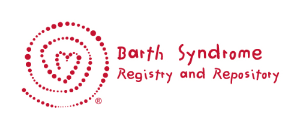The diagnostic odyssey, clinical burden, and natural history of Barth syndrome: an analysis of patient registry data
Title: The diagnostic odyssey, clinical burden, and natural history of Barth syndrome: an analysis of patient registry data
Authors: Aileen Kenneson, Yonglin (Melissa) Huang, Erik Lontok, Lindsay Marjoram
Journal: Journal of Translational Genetics (Special Issue Topic on the Screening and Treatment of Barth Syndrome)

A patient registry is an organized system (usually a database) that systematically collects, stores, and manages information about individuals who share a specific condition, disease, or other health-related characteristics. Registries serves as valuable tool for researchers, clinicians, policymakers, and patient communities. The Barth Syndrome Registry and Repository (BRR) was created to build natural history data (What is Natural History?) on Barth syndrome and further our understanding of the disease. The BRR currently houses the following information from Barth syndrome affected individuals: demographic information, medical information, diagnostic information (including genetic test results), biological samples, and responses to a battery of survey assessments (clinical information, quality of life, medical procedures, biometrics, medications, and family history). The goal of the BRR is to help scientists and clinicians learn more about Barth syndrome, accelerate the development of new research and treatments, identify unmet needs, and improve the care of all those with Barth syndrome.
Findings: In a recent paper, Dr. Aileen Kenneson and BSF’s research team analyzed data from the BRR to characterize the diagnostic odyssey of Barth syndrome (time between first clinical manifestation, or physical sign, to diagnosis), its clinical impact, and healthcare utilization across affected individuals in different age groups.
The team found that affected individuals who experienced cardiomyopathy or heart failure as a first physical sign received a Barth syndrome diagnosis faster compared to other signs including frequent infections, poor muscle tone, or growth delay. The most-commonly experienced signs were cardiac (e.g. cardiac arrest, heart failure, implanted cardiac device), gastrointestinal (e.g. constipation, diarrhea, difficulty swallowing, feeding difficulties, gastroesophageal reflux), neutropenia/frequent infection, and fatigue. Affected individuals saw, on average, 3.6 healthcare professionals annually, the most common being cardiologists and hematologists.
Take-Home Message: The research team demonstrated that cardiac signs are the most common sign observed in Barth syndrome and when presented as the first sign, leads to faster diagnosis. However, the registry data also revealed a high frequency of feeding and gastrointestinal signs in Barth syndrome affected individuals that are still not well understood. Physician-targeted education on the lesser-appreciated symptoms and population-based screening for Barth syndrome may help with timely diagnosis and improved clinical management.
*This publication is a co-sponsored collaboration between the Barth Syndrome Foundation and the Southeast Regional Genetics Network (SERN). Dr. Kenneson serves as an Associate Scientist Consultant for the Genetic Metabolic Nutrition Research & MNT4P Program within the Department of Human Genetics at Emory University and SERN.



